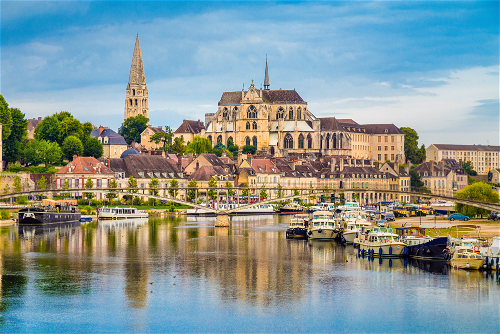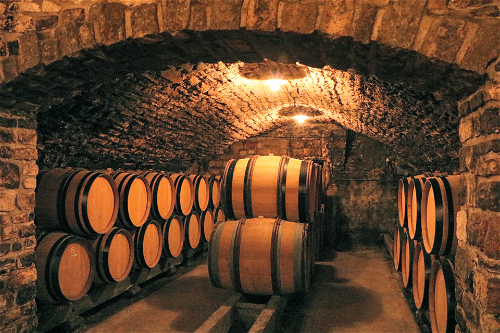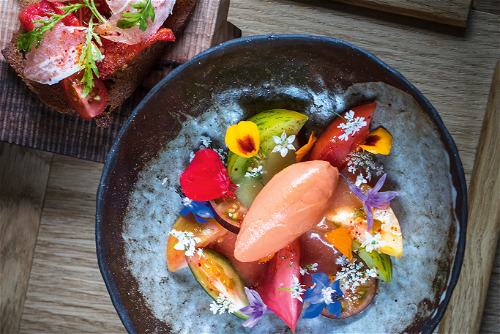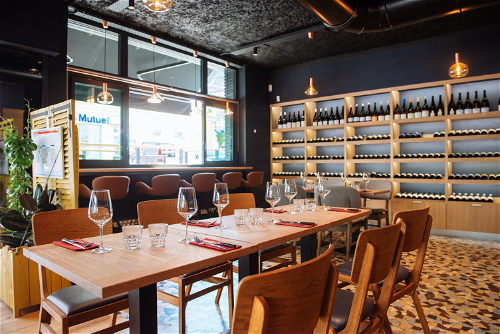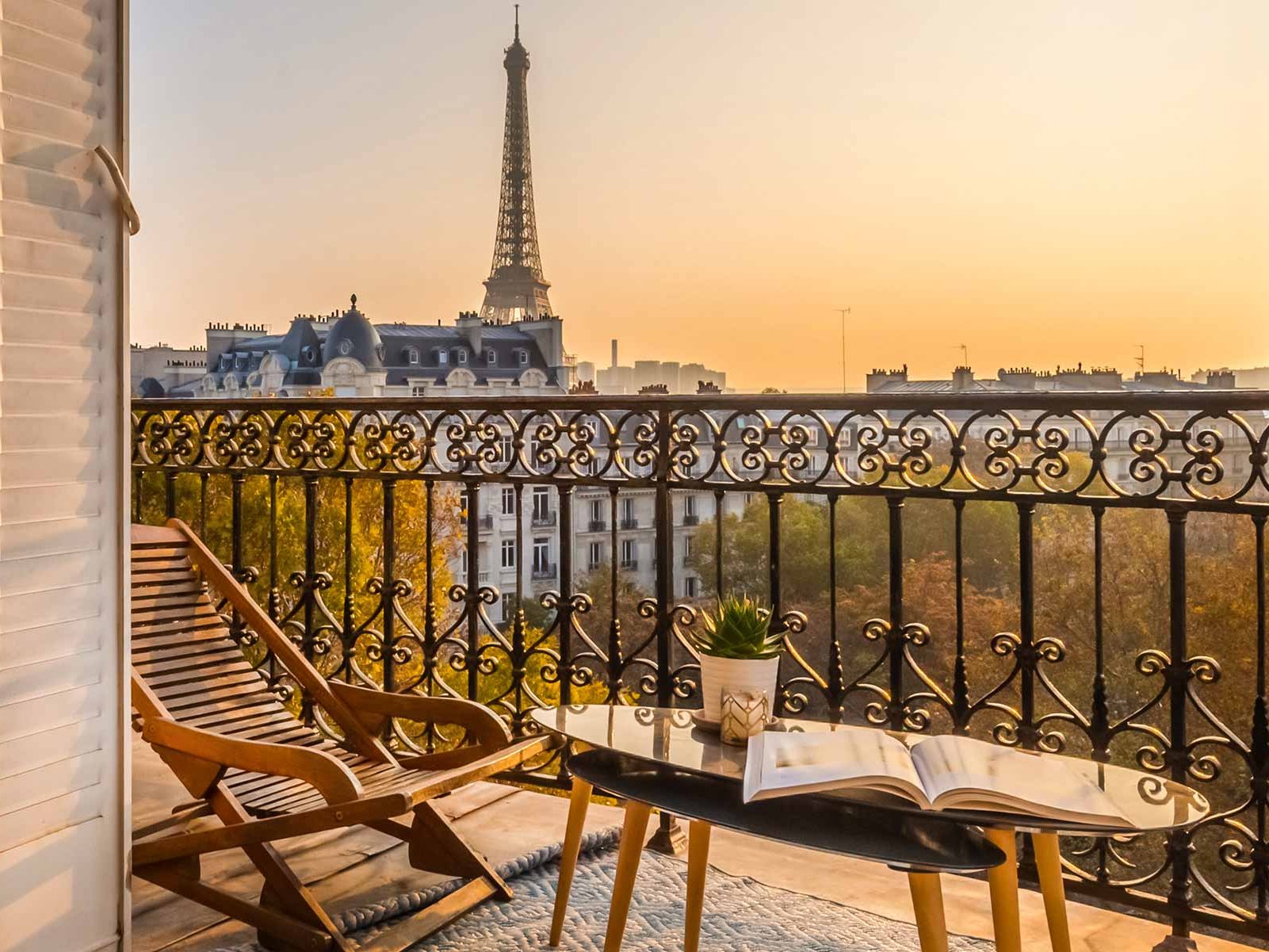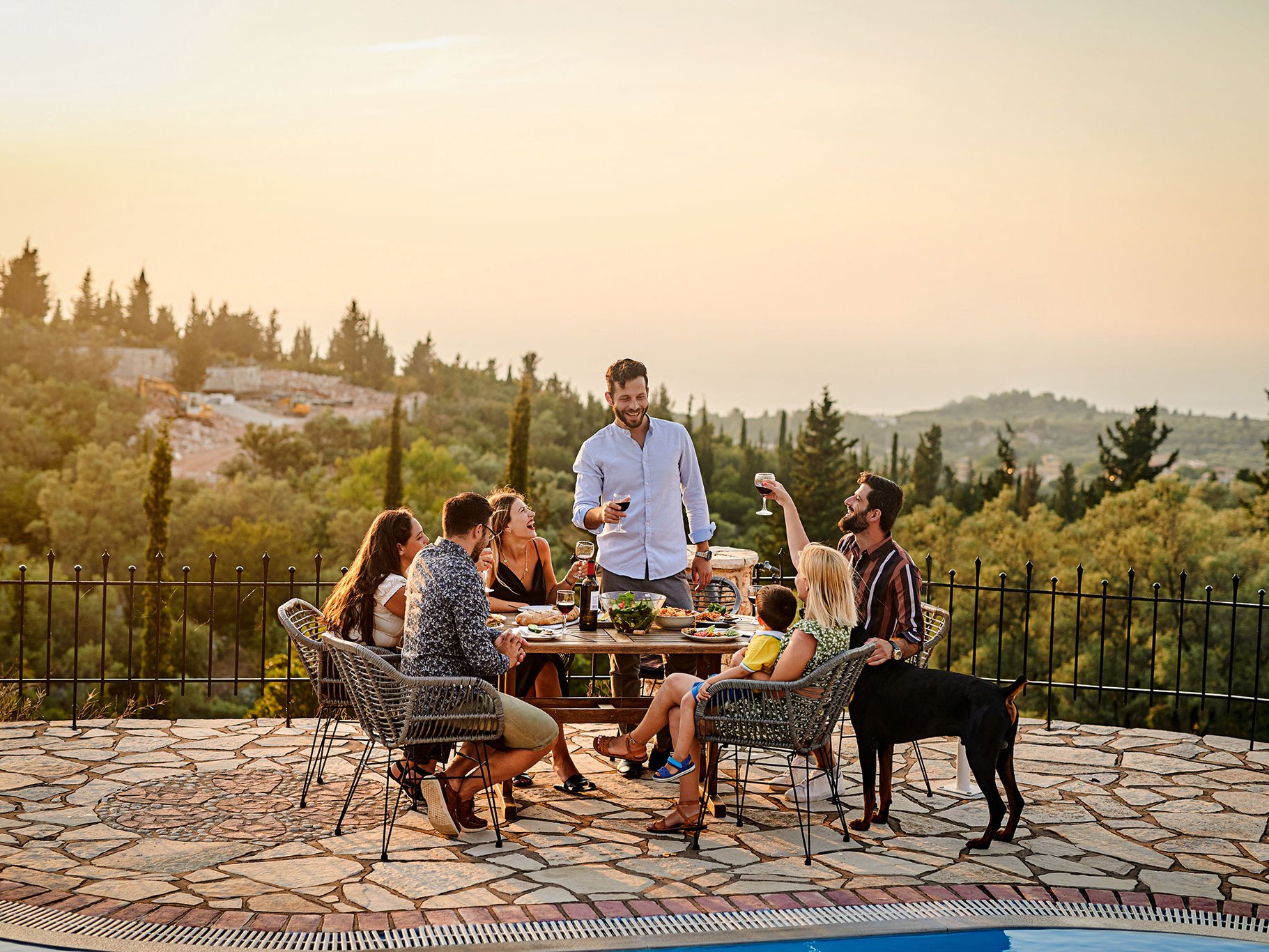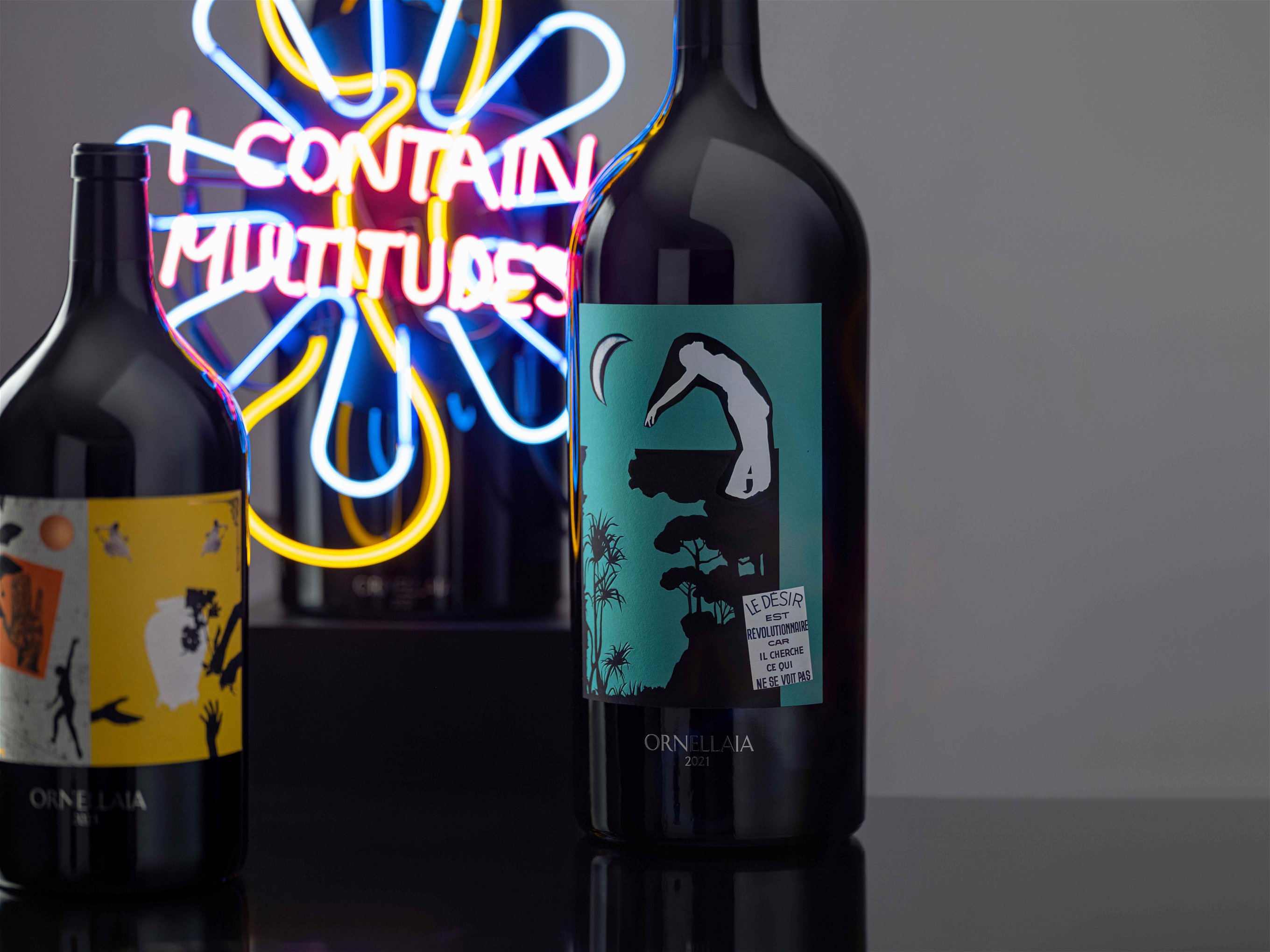Wine Route: Where the Chablis Flows
The Yonne district is best known for its Chablis white wine, the 'coolest' of all Burgundies. But beyond its famous wine, the north of Burgundy has many discoveries in store.
Chablis is a small town with 2,000 inhabitants, half tourist magnet, half agricultural province. In the centre of the town with its two shopping streets, the boutiques of well-known and enterprising (sometimes only enterprising) winegrowers are lined up next to each other, in between the bakers, a deli specialising andouillette, cheese and sausages, and a few restaurants.
Inevitably, one is reminded of the amiably quirky France of Jacques Tati, the comic film director, and not only because of the defiantly named, centrally located restaurant Au Vrai Chablis, a place clearly not intended for an international audience. The same applies to the entrance to the town centre, where during the summer months one encounters an otherwise unknown traffic sign: a crossed-out tractor in a red circle. This translates as: No tractors allowed.
A big wheel
Tourism and tractors – this epitomises the Janus-faced identity of Chablis. The 5,000 hectares of Chardonnay grown in the town of Chablis and in 16 villages in the surrounding area demand extremely efficient management. Compared to the Côte d'Or, large-scale farming is much more common here and there is much less reluctance to adopt technical solutions, for example to combat the now notorious late spring frosts. The small lakes in some places in the landscape are artificially created reservoirs whose water is used to irrigate the vines if frost is forecast – the frozen water protects the young, vulnerable shoots under an ice cocoon.
The winegrowers have the history of their homeland in their bones: in the 19th century, the region was Paris' most important wine supplier. Since the Yonne is navigable from Auxerre and flows into the Seine, it was easy to supply the capital. And the capital could not get enough of the inexpensive, pleasantly light and oh-so culinary white wine called Chablis. More than 40,000 hectares were under vine when the construction of the railway caused the economy to collapse overnight. Now, all of a sudden, wines from the Midi arrived in the capital just as quickly, and at a much lower price. By the end of the 1950s, after phylloxera, two world wars and a series of devastating frost years, the vineyard area had shrunk to one hundredth of its former size, to just 400 hectares.
Although viticulture has recovered from this low, the typical Chablis winegrower today has a much higher risk aversion than his colleagues in the rest of Burgundy. Another characteristic of this is the winemakers' preference for machine harvesting. Isabelle Raveneau from the most famous star-domaine of the village estimates that about 85% of the areas in the AOC are harvested mechanically. Even though her own winery relies exclusively on manual harvesting, Raveneau does not want to scold her colleagues: "You have to admit that you can be much more reactive with the machine – especially if the weather deteriorates." And Vincent Dauvissat, Chablis' second cult winemaker, also reserves criticism: "I'm not saying that you can't also produce excellent wines with machine harvesting. But for me personally, it is not a viable way. Je suis vigneron – I am a winemaker!"
A gastronomic hotspot
For wine tourists, Chablis is an idyll, especially since the gastronomy has made significant progress in recent years. There is still no Michelin star, but two establishments in particular add glamour to the place. There is the wine bar Chablis Wine Not, where you can eat small tapas-like dishes and beef from the Simmental, but above all choose from a truly encyclopaedic wine list. The whole of Burgundy, Champagne and the Northern Rhône are represented here, not just Chablis.
The focus in the restaurant Au Fil du Zinc, on the other hand, is on creative, young cuisine, served in the atmospheric setting of an old mill under which the small Yonne tributary, the Serein, flows. The wine list does not have the epic depth of Chablis Wine Not, but here, too, you can order wines that are virtually unavailable in the wine trade, especially those by Vincent Dauvissat and François Raveneau.
La douce France
The surroundings of Chablis also have many discoveries to offer. For one thing, you have to see the vineyards; many wineries offer guided tours. Last but not least, the Kimmeridgian clay, which lies in and under the Grand and Premier Cru vineyards, is worth seeing; a sedimentary limestone rock formation that is made up of tiny shells like a fossilised puff pastry. For sure, anyone who has seen this crumbly white stoney soil is no longer surprised that Chablis is such an ideal partner for oysters.
A similar subsoil also determines the vineyards in the two smaller neighbouring AOCs, which are dedicated to grape varieties other than Chardonnay: Irancy, with its impressive steep slopes, grows Pinot Noir, and in St-Bris, as a curiosity, one finds Burgundy's only appellation for Sauvignon Blanc.
World heritage site Vézelay
Auxerre, the capital of the Yonne departement, has an old town that is well worth seeing. Its most beautiful streets are enchantingly pretty, but at its edges it also shows that the town did not always prosper in the 20th century.
If you don't mind a 50-minute drive, you'll find a UNESCO World Heritage Site in the picturesque town of Vézelay with its 400 inhabitants and its 12th-century basilica of Sainte-Marie-Madeleine. The view from there is of a lovely landscape with rolling hills, forests and meadows. And wines that have had their own designation since 2017 – AOC Vézelay – their fine, independent wine style clearly indicates they are among the winners of climate change.
Ravenau
The most expensive and sought after Chablis comes from a small family business.
The domaine was founded in 1948 when François Raveneau married a Dauvissat by birth and was able to access vineyards from this long-established winegrowing family. In the following decades, Raveneau was able to acquire further Premier and Grand Cru parcels. The second generation has now just handed over the day-to-day running of the business to their children: Bernard Raveneau's daughter Isabelle is in charge of the cellar like her father, while Jean-Marie's son Maxime looks after the vines like his father before him.
The Raveneau house style is fresh, ultra-precise and polished, the wines tend to have a little less minerality than those of Vincent Dauvissat, but are models of balance and fine spicy development as they age in the bottle. The wine markets are eating up every bottle, with just under ten hectares under vine and in view of the fact that the winery itself sells almost exclusively to the restaurant trade and only a handful of trade customers, the prices for the most desirable wines rise into four-figure spheres. Besides the Grands Crus Blanchots, Valmur and Les Clos, the Premier Cru Montée de Tonnerre is the standard bearer, where the family owns a considerable three hectares. Other Premiers Crus in production are Butteaux, Vaillons, Forêts and Montmains.
An excellent normal Chablis is also part of the range, and for a few years now also a Petit Chablis from a parcel on the plateau above the Grand Cru slope. Stylistically, the young generation does not strive for any changes, why should they? Instead, Isabelle Raveneau is keen to emphasise that in Chablis as a whole, "there's a great dynamic." Even as a luminary with stellar bottle prices, the message is simple; the domaine remains first and foremost a part of the local winegrowers' community.
Restaurants
Chablis Wine Not
1, Rue des Moulins, 89800 Chablis
chabliswinenot.com
Au Fils Du Zinc
18, Rue des Moulins, 89800 Chablis
aufilduzinc.fr
Les Trois Bourgeons
10, Rue Auxerroise, 89800 Chablis
restaurant-chablis.fr
Le Jardin Gourmand
56, Boulevard Vauban, 89000 Auxerre
lejardingourmand.com
Le Table De Clavisy
34, Place du Grenier à Sel, 89310 Noyers
Hotels
Hotellerie Des Clos
18, Rue Jules Rathier, 89800 Chablis
hostellerie-des-clos.fr
La Côte St. Jacques
14, Faubourg de Paris, 89300 Joigny
cotesaintjacques.com
Château De Vault-De-Lugny
11, Rue du Château, 89200 Vault-de-Lugny
lugny.fr
Best Western Signature Le Maxime
2, Quai de la Marine, 89000 Auxerre
hotel-lemaxime.com

